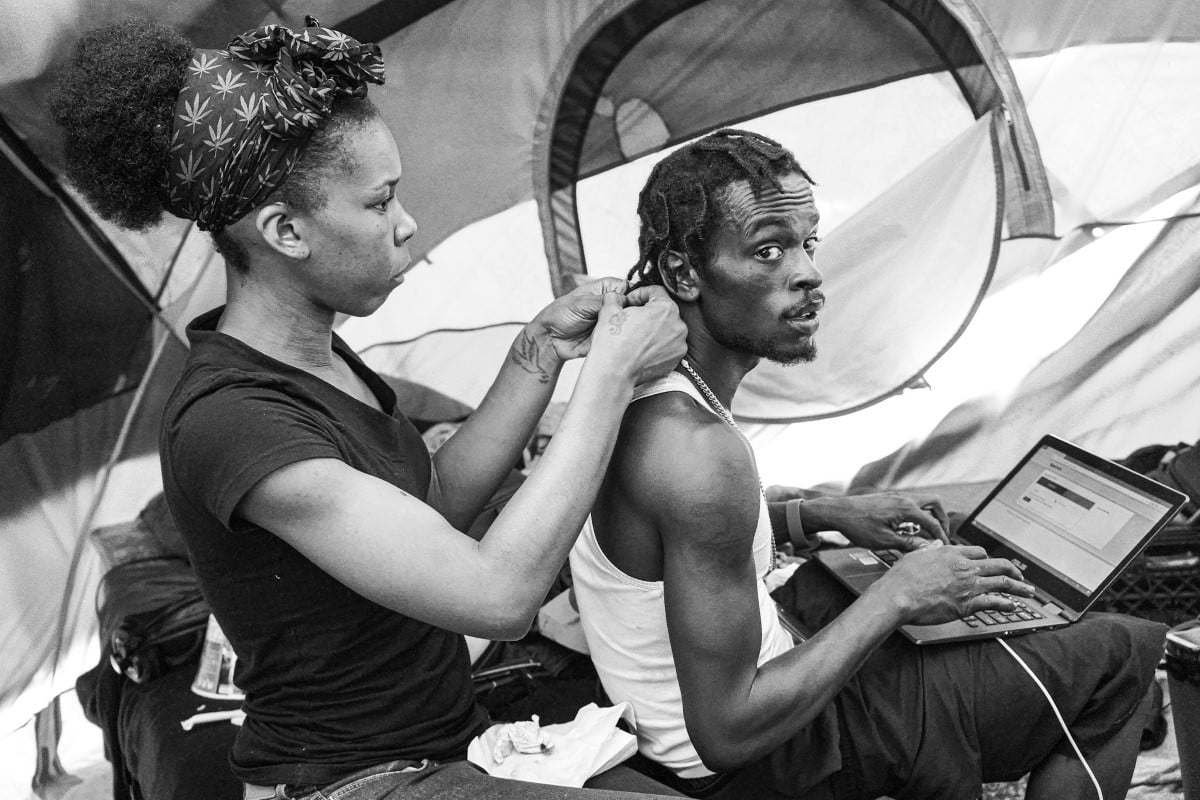
For the past decade, photographer Suitcase Joe has been spending time at Skid Row in downtown Los Angeles. This area, known for its population of people experiencing homelessness, often gets a bad rap. Suitcase Joe was curious to connect with its inhabitants and learn more about their stories. And from this desire, he forged relationships that have allowed him to capture Skid Row in a raw, honest manner.
His unflinching look at life on the street is also tinged with the respect he has for the people that he meets. By approaching them with a genuine spirit, he’s found himself enriched by these encounters. It’s this enrichment that he hopes to pass on to others by publishing his work together with short texts to explain the meaning behind the images. Soon, he’ll be releasing his second book Grey Flowers with Burn Barrel Press, which will feature many of his Skid Row images.
We had the opportunity to speak with Suitcase Joe about his photography. Read on for My Modern Met’s exclusive interview and learn more about what pushed him to visit Skid Row, as well as why he feels that he’s been able to get its residents to open up to him on camera.
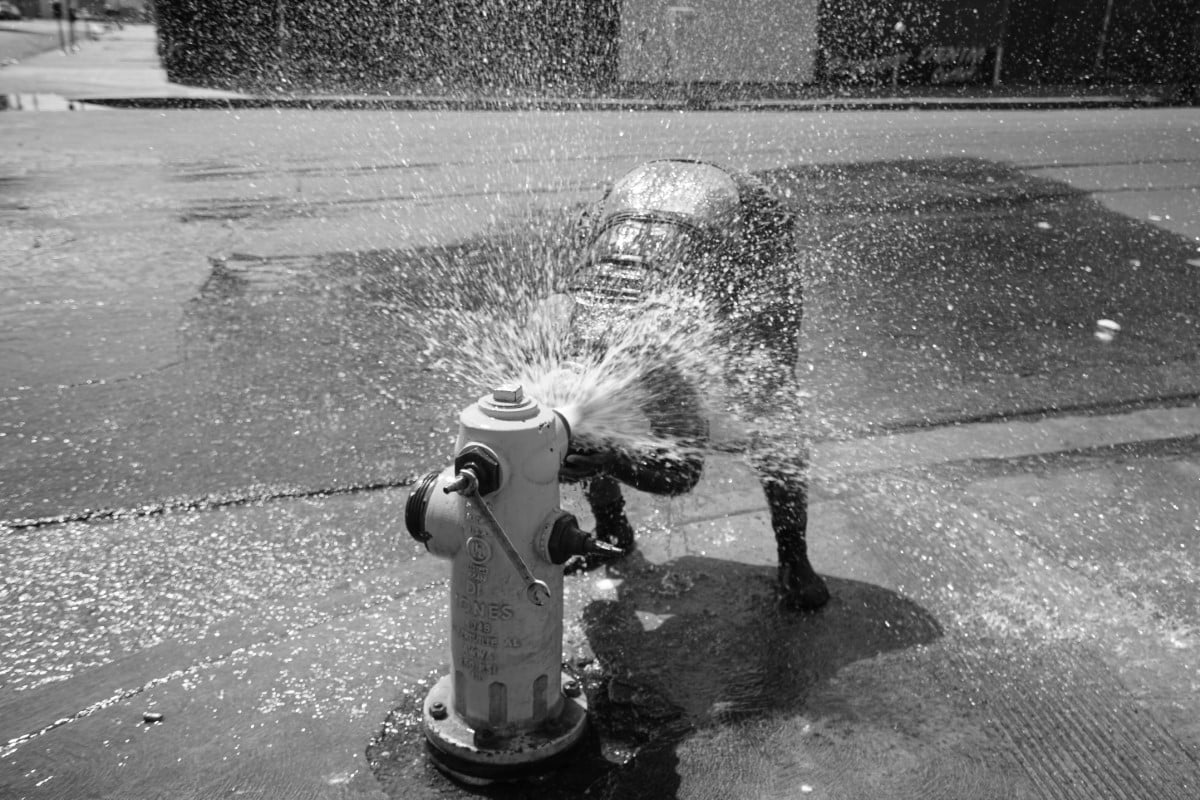
Where does your love of photography stem from?
It’s hard to say exactly where my love for taking photos comes from. I read more than I look at other people’s photography, and often it’s the feeling from the people and places I’ve read about that I’m trying to capture. I want my photos to make people feel the way books and authors have made me feel.
For me, photography is much more than taking photos. I love to be alone, to wander and explore. I like meeting all kinds of people and talking with them to learn about their stories and life. My camera and writing give me a reason to do all this. It really brings me the deepest kind of joy—a small quiet one that I take everywhere I go.

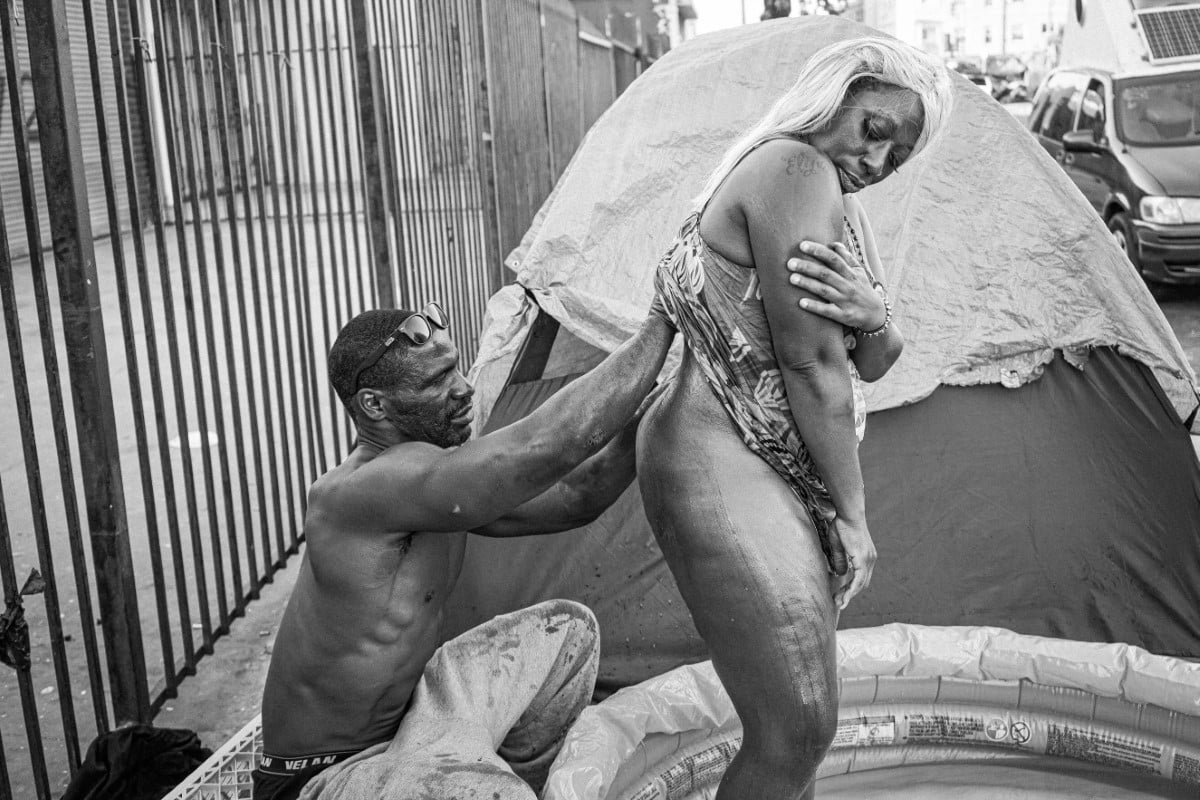
What first pushed you toward documentary photography?
It all happened organically for me. I thought someone should photograph and document Skid Row for historical archives. I suggested the idea to a couple of photographers, who told me they had no interest in going into Skid Row. Eventually, I realized I was seeing it a certain way in my head, and I should just pick up a camera and do it myself.
I never set out to be any one kind of photographer, but my wanting people to connect with the unhoused is what pushed me toward documentary photography. At first, I just wanted to photograph all the people living in Skid Row. I thought about what the photos would look like to someone seeing them a hundred years after I took them. Soon I realized my photos alone were not enough to tell their stories.
Next, I began writing about our conversations and what I learned from them. That really changed everything for me. It combined writing, photography, adventure, and helping people all in one. I’ve continued to grow in the documentary direction ever since, but I approach my photos like fine art. I want to show the beauty of people and places. I’m most interested in showing the beauty of overlooked places or misunderstood people.
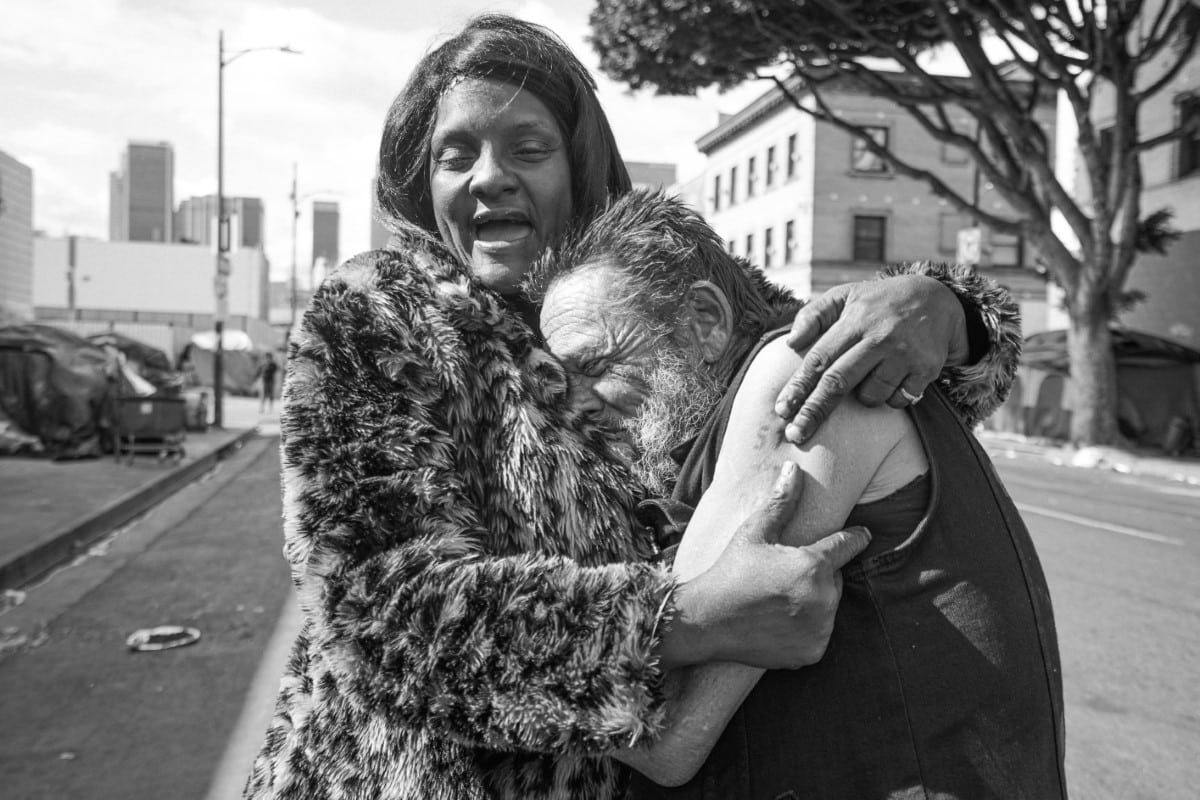
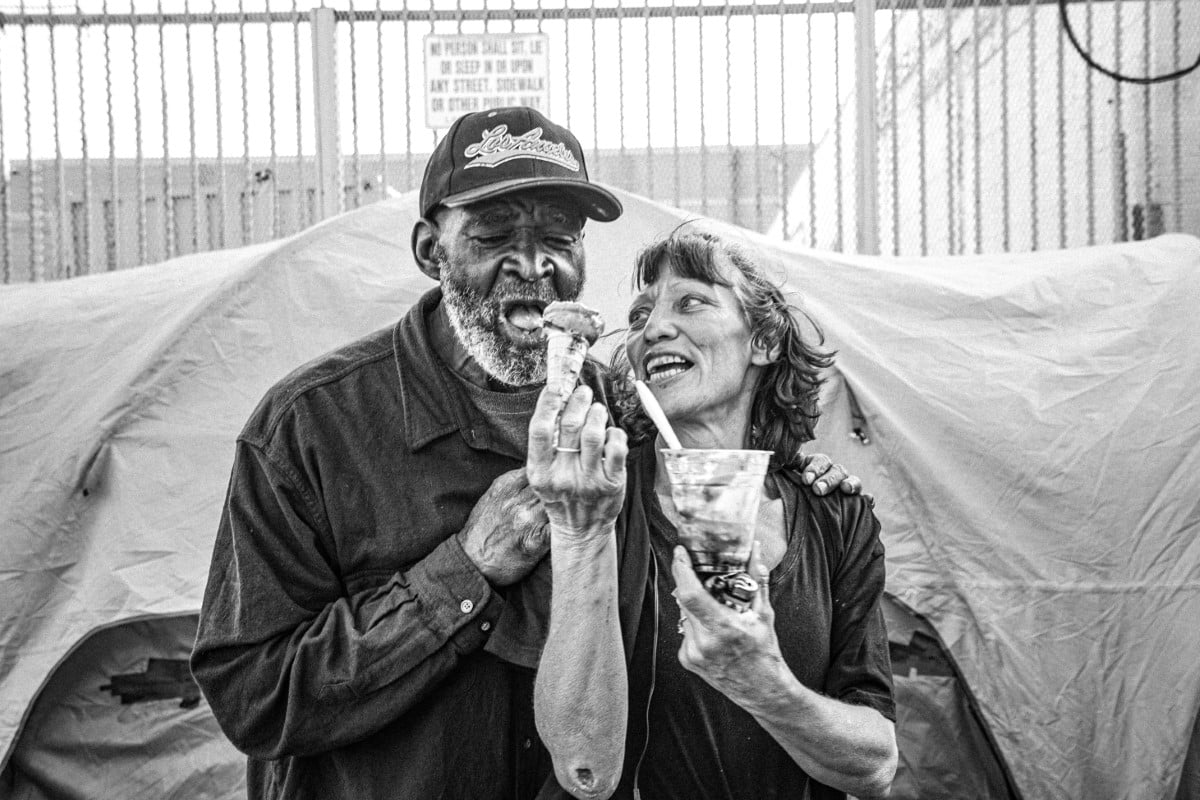
What was your first experience taking images at Skid Row like?
I was scared to go into Skid Row early on. I continually had to push myself past my comfort zone and go a little further each time. The first experience I can remember is talking with a man who went by the name Old Red. We hung out at his tent for a few hours while he fried chicken and talked. His intelligence was on another level. I remember thinking to myself, “Why am I surprised this man’s intellect is far beyond my own?”
I came to the realization that I was not as open-minded as I thought I was. I made the assumption that Old Red, like many others living outside, was not as intelligent because of where they were at in life. I know now that there are countless reasons why anyone can end up living on the streets, but that was a profound moment for me. I knew then that I had a lot to learn. I needed to be aware of my own misconceptions and shortcomings if I was gonna help change them for others. We all have room to grow.
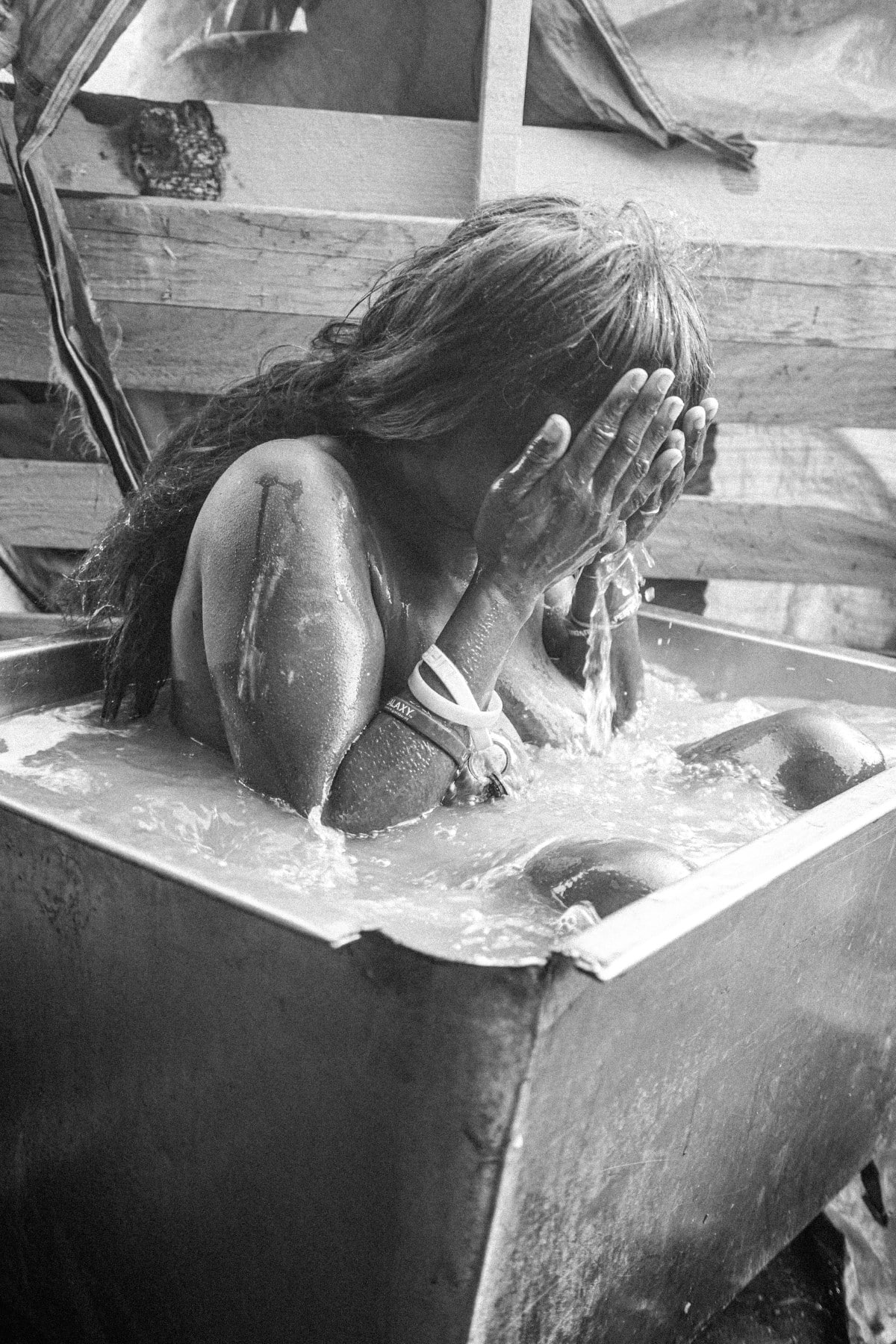
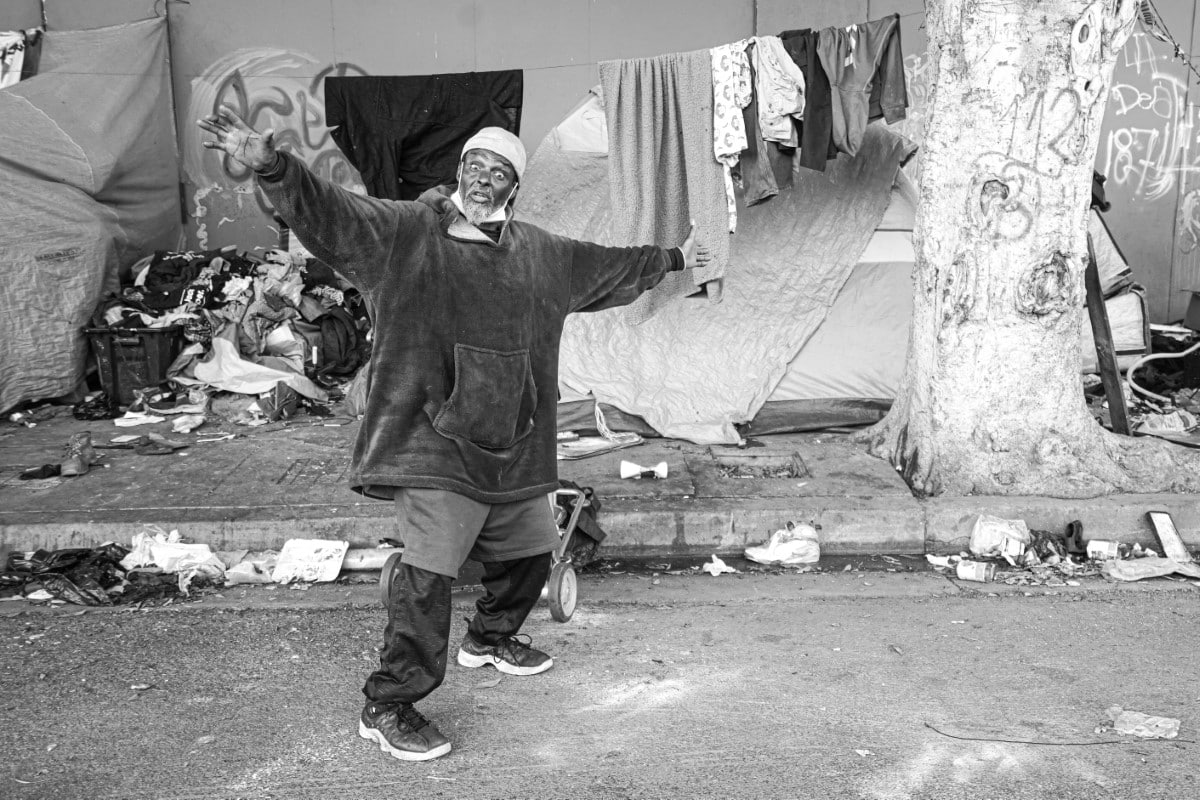
Why do you think you are able to put people at ease in order to get the photograph that you’re after?
I get asked this a lot, and the only thing I can surmise is I’m genuine. I really care about the people I meet. I truly am interested in getting to know them. The connections I make are real. I don’t always take my camera along. I champion the underdog because I grew up as one. I greatly appreciate the time they take to speak with me and the many who have opened up about themselves to share with me. I really love them all.
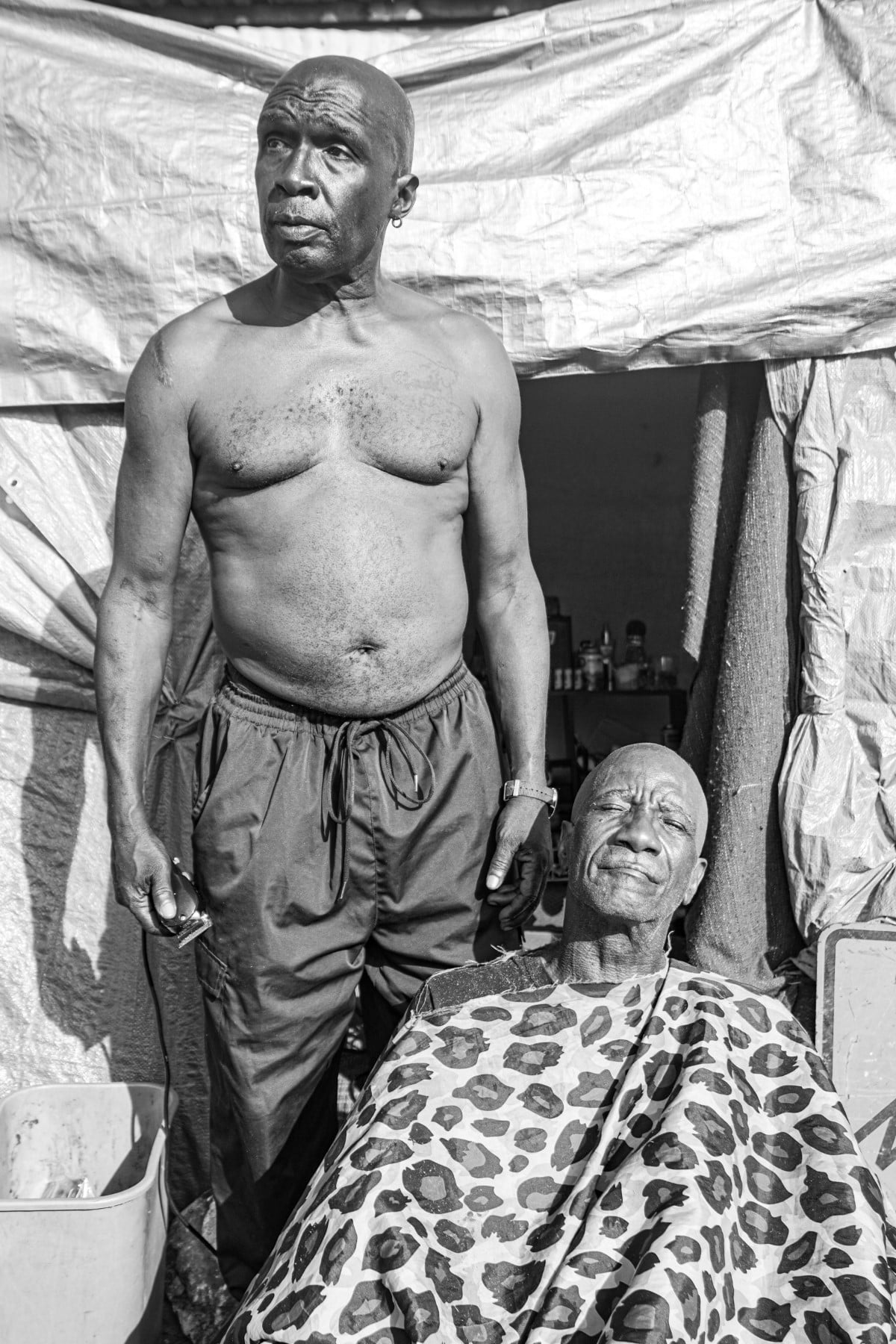
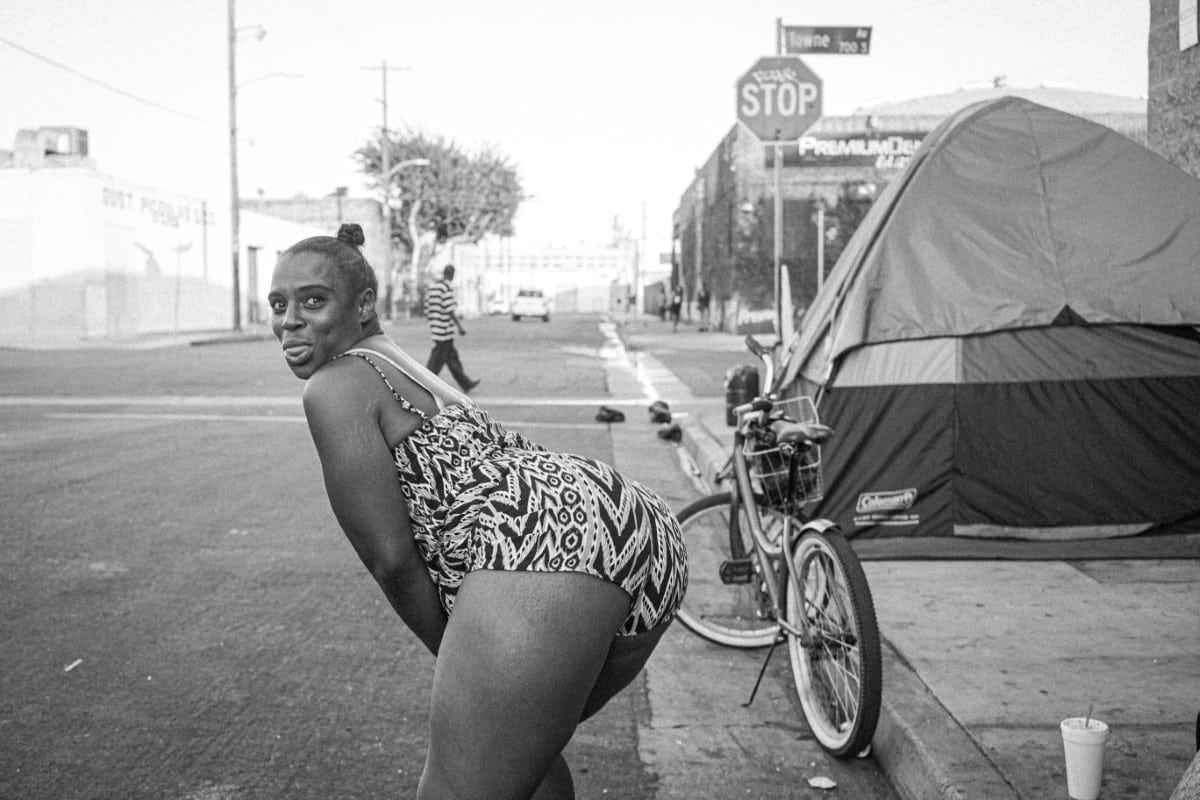
What’s the biggest misconception you feel that the public has about people living on Skid Row?
Where do I begin? The truth is no matter where you’re at in life, we all want the same things—to be loved and appreciated and to be treated with dignity and respect. People living on the street are highly aware that people look down upon them like they are subhuman. This prevents a lot of them from ever trying to escape their surroundings because there is comfort in surrounding yourself with others who understand where you’re at without judgment.
The biggest misconceptions are that people living on the street want to be there or that they are there because they’re lazy or drug addicts. Each of them is a product of different environments, and no easy road ever leads to Skid Row. Don’t assume anything. Go say hello and find out.
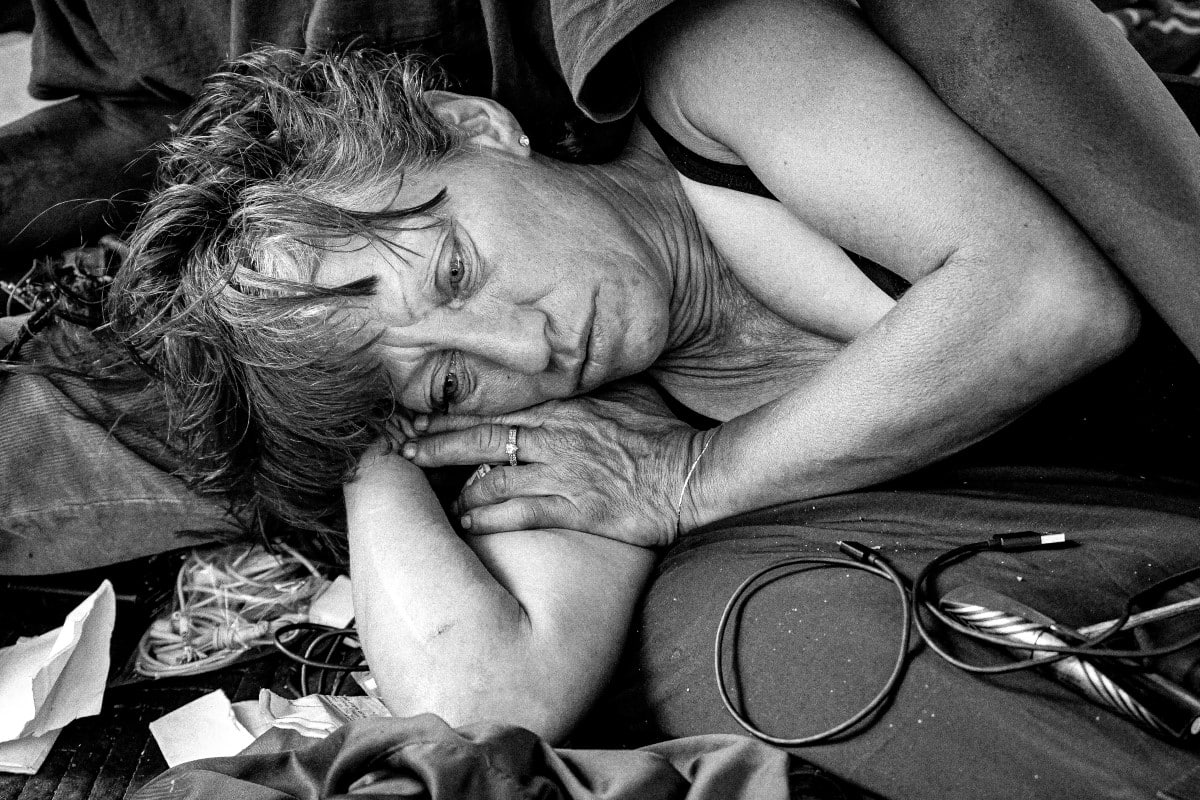
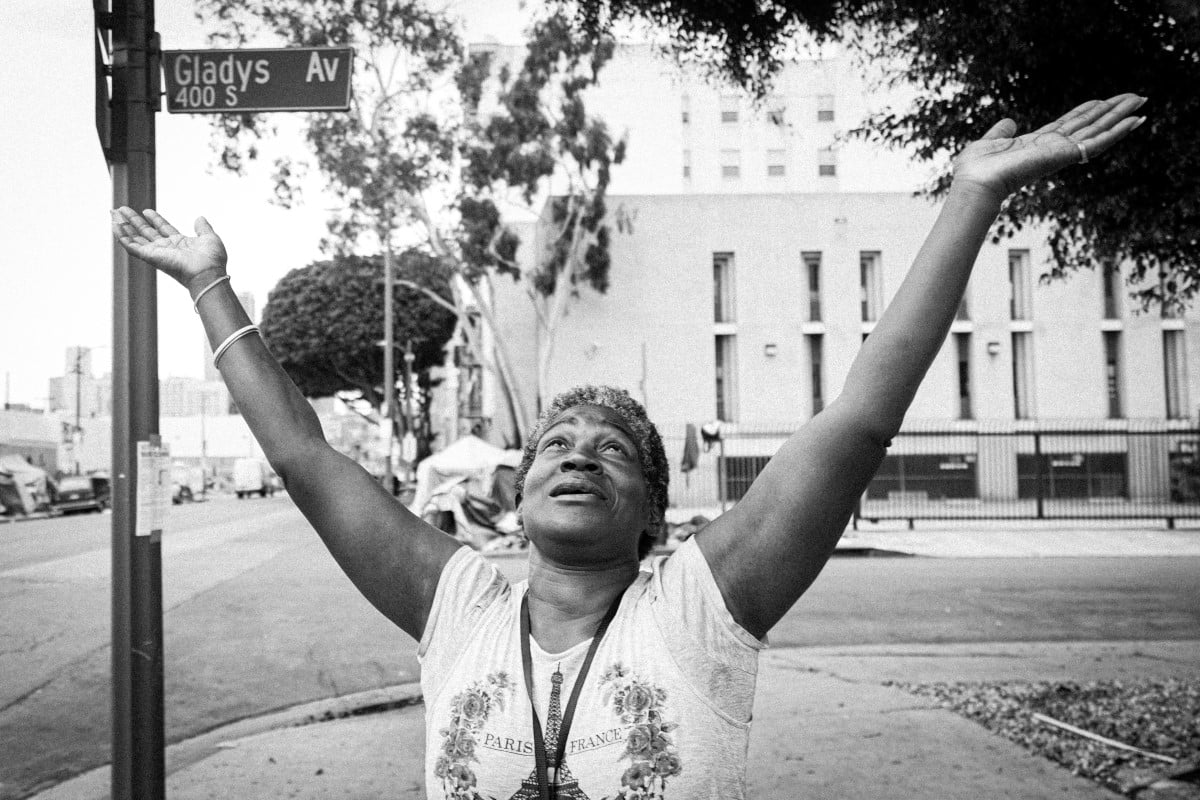
What’s your most memorable encounter and why?
I’m not really a nostalgic person, and I don’t do too much looking back. Nothing stands out specifically. I look at my time there as a whole. Skid Row has deeply changed me as a person for the better. As many people as I’ve helped in Skid Row, they have also helped me. It was years before I realized Skid Row was my own kind of therapy. All the wonderful people there made me fall in love with humanity again.
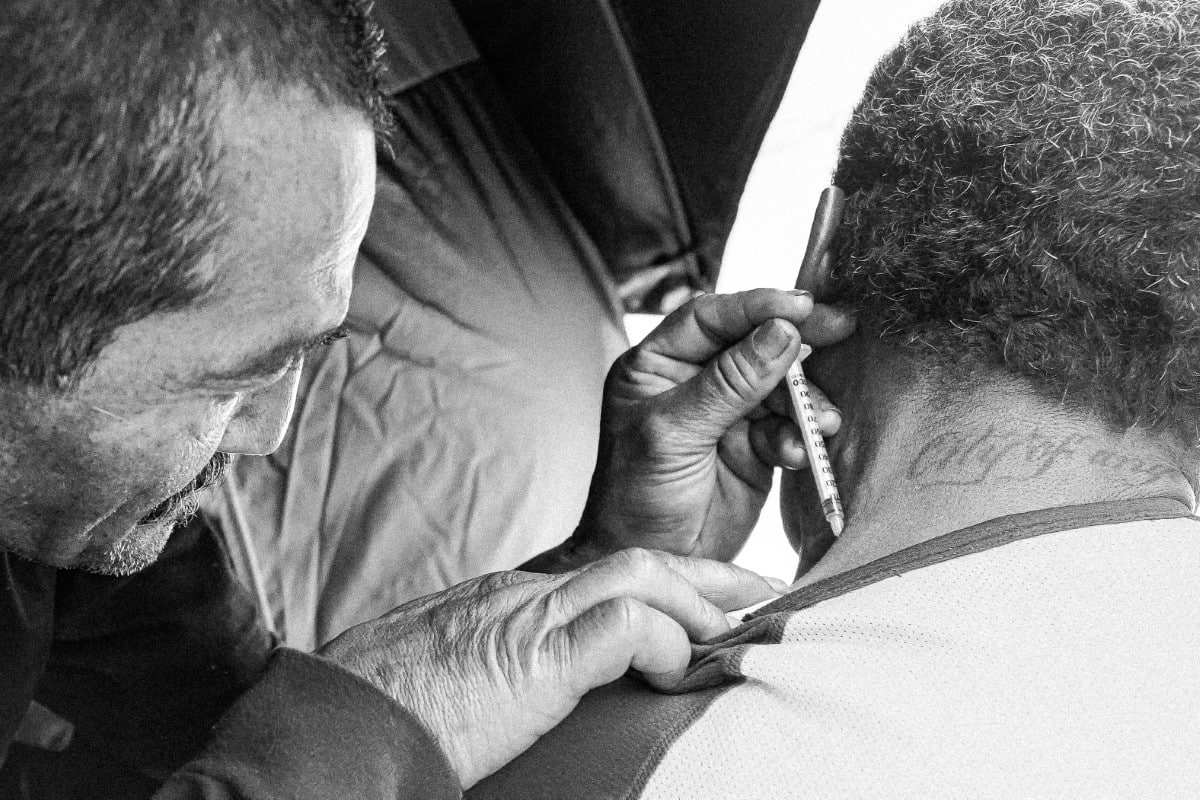
What do you hope that the public takes away from these images?
Love and compassion for others even when it’s difficult and doesn’t always make sense. We don’t always have to understand everyone around us—but that doesn’t mean we shouldn’t be kind.
